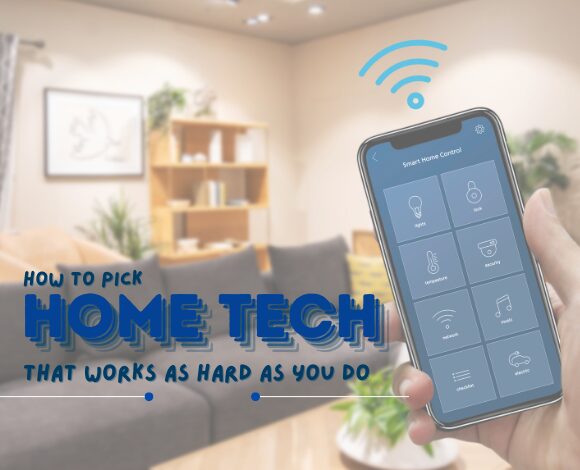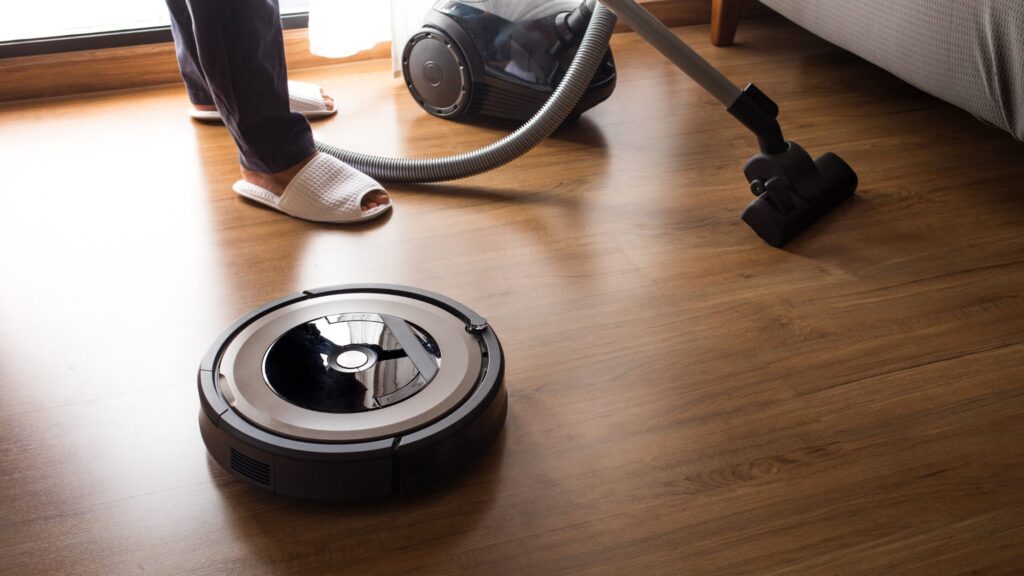How to Pick Home Tech That Works as Hard as You Do

Smart home technology should make everyday tasks simpler and more efficient. Yet many devices fall short — demanding frequent updates, overcomplicating basic functions, or becoming obsolete within months. The most useful tools are the ones that blend into your routine and consistently deliver without extra effort.
When evaluating home tech, it’s worth focusing on what enhances daily life in practical ways. Features that reduce friction, designs that serve multiple purposes, and products that remain dependable over time tend to provide the most value.
Start With What’s Actually Slowing You Down
The best way to choose the right home tech is to first identify the daily friction points — the moments that consistently waste time or energy. Without pinpointing what’s not working, it’s easy to purchase tools that look impressive but offer little impact.
Is Cleaning a Daily Struggle?

Cleaning often feels overwhelming because it’s repetitive and time-consuming. Instead of using tools that need constant attention, focus on devices that operate on their own or support more regular upkeep with minimal effort. If you’re unsure where to start, this breakdown of Dyson products highlights how some designs are built to make daily cleaning easier.
Look for:
- Cordless vacuums with dirt sensors – These detect debris levels and adjust suction automatically.
- Robot mops or vacuums with room-mapping – They navigate efficiently, covering more space without repeated input.
- Washable filters and reusable parts – Reduce long-term costs and maintenance time.
By investing in devices that handle routine messes without your constant involvement, you’ll save time and create a cleaner space more consistently.
Do You Feel Stuffy or Foggy at Home?
Air quality has a direct impact on how you feel — both mentally and physically. Many people live with dust, allergens, or dry air without realizing the toll it takes on comfort, energy, and focus.
Key features to consider:
- Real-time air quality monitoring – Automatically detects pollutants like PM2.5, VOCs, and humidity changes.
- Multi-function units – Combine a purifier, fan, and humidifier in one compact design.
- Quiet operation – Runs throughout the day or night without becoming a distraction.
Improving indoor air can have subtle but meaningful effects — from fewer headaches to better sleep and overall focus.
Are You Juggling Too Many Tasks in the Morning?
Morning routines set the tone for the rest of the day. Small automations — like scheduled lighting, pre-programmed coffee makers, or thermostats that adjust as you wake up — can reduce decision fatigue and improve flow. The right tech doesn’t just save time; it removes small stress points that add up over time.
Choose Tech That’s a Quiet Assistant — Not Another Job
Home technology should work in the background. If a device constantly asks for updates, requires troubleshooting, or disrupts your routine more than it helps, it quickly becomes a burden. Prioritize tools that reduce manual involvement and quietly support your day.
Look for Set-It-and-Forget-It Features
The most effective smart tools are those you barely need to think about. Devices with automation features like scheduling, sensor detection, or adaptive settings can run consistently in the background without requiring constant manual adjustments.
Examples include:
- Vacuums with automatic suction control – Increase power based on dust levels for deeper cleaning without extra effort.
- Air purifiers with smart fan speed – Adjust airflow depending on current air quality for continuous, optimized performance.
- Lighting systems with motion or time-based control – Turn on or adjust brightness automatically as you move through your space.

These features reduce the need for user input and allow your tech to adapt naturally to your lifestyle, offering daily support with minimal involvement.
Maintenance Shouldn’t Be a Chore
Convenient tools quickly lose their appeal if they require constant upkeep. Instead, look for products designed with efficiency and ease of use in mind — especially when it comes to maintenance and long-term care.
Consider:
- Self-cleaning or washable components – Save time and money by avoiding disposable parts.
- Rechargeable batteries with long runtime – Extend use between charges and avoid frequent interruptions.
- Minimal consumables – Reduce reliance on costly or brand-specific replacements.
Devices that are easy to maintain are far more likely to remain in regular use — making your investment more valuable over time. Certain Dyson tools offer long-life components and reusable filters that minimize upkeep while staying reliable.
Setup Should Feel Like Common Sense
Complicated installations discourage consistent use. Home tech should be intuitive, with interfaces that make sense from the start. Clear visual indicators, mobile app integration, and voice control compatibility often lead to faster adoption and less frustration.
Pick Products That Do More Than One Thing
When selecting home tech, multifunctionality often delivers the most value. Instead of filling your space with single-use gadgets, it’s more practical to invest in tools that can handle multiple tasks without compromising performance.
Built-In Intelligence That Actually Works
Smart devices should enhance your environment without requiring constant adjustments. Tools equipped with real-time sensors — like those for dust, humidity, motion, or light — can automatically adjust their settings to match your needs. This creates a seamless experience where the technology works in the background, responding to changes before you even notice them. Features like auto-mode, adaptive brightness, or responsive suction are signs that the tool is doing more than just running — it’s thinking for you.
Multi-Function Matters More Than Multi-Device
Rather than purchasing three separate devices to handle air quality, cooling, and humidity, it makes more sense to invest in one unit that does it all. The same principle applies to cleaning tools — a vacuum that can transition from hard floors to upholstery, or that includes attachments for pet hair, maximizes functionality without adding clutter. Choosing these hybrid tools helps reduce the number of devices you have to charge, clean, or find space for.
Good Design Is More Than Aesthetic
While design is often thought of in terms of style, it’s equally important to consider how a product fits into your space and routine. Devices that are compact, easy to move, or come with built-in storage for accessories are more likely to stay in use. A product that looks sleek but doesn’t store easily, charge efficiently, or dock intuitively will eventually get pushed aside — no matter how advanced it is. For a look at design done well, see how Dyson balances form and function across categories.
Think About Value Over Time — Not Just Price

The upfront cost of a home tech device doesn’t always reflect its true worth. A cheaper product that breaks down quickly or becomes outdated might cost more in the long run. Evaluating long-term value means considering durability, software support, and how well the product continues to serve your needs over time.
Will It Still Be Useful in Two Years?
Trendy gadgets often lose their appeal once the novelty wears off. Look for tools that stay relevant because they solve ongoing problems — not just because they’re new. A good sign of long-term usefulness is whether the device receives software updates, integrates with evolving platforms, or adapts to new features without needing replacement.
Does the Company Offer Real Support?
Even well-made devices can run into issues, and that’s where strong customer support matters. Products with warranties, accessible repair options, and responsive service teams are far more likely to offer a positive ownership experience. It’s also helpful to choose brands that provide spare parts and accessories easily, reducing the need for complete replacements.
Is It Priced for What It Solves?
High cost isn’t necessarily a downside — if the product genuinely replaces other tools or saves significant time. A vacuum that handles multiple surfaces and auto-adjusts may justify its price if it reduces cleaning time and lasts several years. On the other hand, avoid paying extra for gimmicks that don’t offer daily value. Function should always justify the price.
Conclusion
Smart home technology should enhance your life quietly and reliably. The most worthwhile devices aren’t the ones with the flashiest features — they’re the ones that consistently support your routine, reduce small stressors, and stay functional over time.
By focusing on real needs, looking for intelligent features that require minimal input, and choosing products that serve multiple purposes, you’ll build a setup that genuinely works for you. Value isn’t just about price — it’s about how much time, effort, and energy a product saves you every day.
Choosing home tech that works as hard as you do means investing in solutions, not just gadgets. With the right approach, the tools you bring into your space become reliable partners — not another task to manage.



